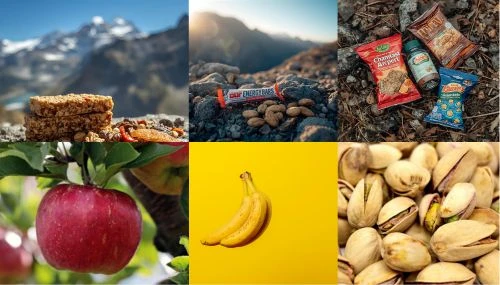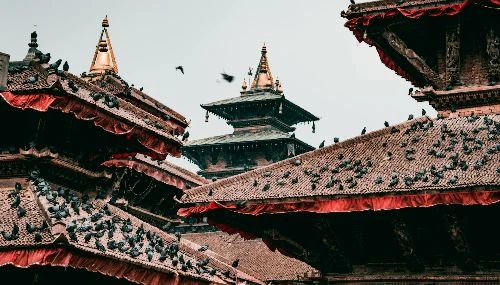Nepal attracts thousands of tourists from all over the world primarily for trekking. The topographical structure of Nepal is what makes it one of the best destinations in the world for adventure sports.
I know that the thought of high altitude, white peaks, snow, hills, rivers, and the village lifestyle is very exciting. Getting there, however, needs a lot of preparation. You need to know what to take and what to wear when trekking in Nepal.
You see, your experience of the trek is significantly influenced by both the trekking gear and clothes. Even the best view or the best trail will not be enthralling enough if you are in any form of physical discomfort.
You need to try and eliminate all the avoidable discomfort of trekking. And you can do so simply by buying the right kind and amount of clothes.
While packing for trekking in Nepal, you need to keep in mind the destination, its strenuousness, its altitude, and the weather. Once you are well aware of these factors you will know what to pack for your trek.
To fully understand what to wear trekking in Nepal, let’s divide the trekking season into two halves- winter and summer.
In summer, it is hot and sunny during the day and pleasant and chill during the night. However, if you plan to trek to a relatively higher altitude, you will need very warm clothes.
In winter, you can expect snow in almost all of the trekking regions. And regardless of the altitude, the weather is going to be extremely cold.
The next important factor to be taken into consideration is the material of the cloth. The material of the cloth should be soft and breathable because you need to be dry, comfortable, and warm.
This article will guide you through what to wear when trekking in Nepal. Listed below are some tips and ideas that will help you pack your bag for any trek.
Determine the season
As mentioned earlier, there are two trekking seasons.
If you are trekking in summer, wear shorts and trekking shirts that absorb sweat and dry fast. Make sure your top is full-sleeved to prevent yourself from the direct rays of the sun. Also, carry an extra pair of warm clothes to switch into in the evenings. You will need a hat or a cap to protect your face from the direct rays of the sun while walking.
If you are trekking in winter, you will need extremely warm clothes. Carry fleece trekking tops, down jackets, and windshield jackets to protect yourself from the cold. You will also need warm trousers or trekking pants that absorb sweat and dry fast.
Additionally, you will also need leg warmers, a cap to keep your head warm, and gloves. Because there are too many things to carry in winter, your bag is most likely to be heavy. I would, therefore, strictly recommend you hire a porter so that you can walk comfortably and lightly.
P.S. Take as many socks and underwear as the number of days of your trek. Carry one or two extra if you can. While you can wash your worn socks along the way, you could be very tired too so doing by evening. Also, the socks have less time to dry out. In winter, the water is too cold, and socks take even longer to dry.
Determine the altitude
The higher your targeted altitude such as Everest Base Camp Trek and Annapurna Base Camp Trek, the colder it is likely to be regardless of the season. If you are trekking in summer, you will need light clothes for lower altitudes such as Ghorepani Poon Hill Trek, and Dhampus Sarangkot Trek, and warm clothes for higher altitudes.
If your destination lies below 2000m, then you may not need warm clothes. If it's winter, pack warm clothes, warm socks, gloves, and a scarf.
If you are trekking to a height above 2000m, then you must carry warm clothes. Most important, don’t forget to pack a scarf or a mask. The air is so cold up there that it is difficult to inhale it. Sleeping bags are a must. You may not find a room for yourself, especially if it happens to be a peak season because there are only so many hotels in higher altitudes.
Always dress in layers
This is more like how to wear rather than what to wear trekking in Nepal. It is important to understand how to dress so that you can carry your clothes accordingly.
It is highly recommended to dress in layers. It is relatively colder in areas of high altitude. But as you walk, you will feel hot. Dress in layers so that you can adjust your outfit according to the changing weather or your body temperature.
To dress in layers, the innermost layer should be water and sweat-resistant so that your sweat dries out faster. This will prevent you from catching a cold or fever along the way. Then you can layer with a windshield jacket or a down jacket depending on the weather or season.
The material of the cloth
This is an important factor to consider while trekking. Let’s start with the most important and basic clothing- underwear. Carry only cotton underwear and a vest. This is because cotton dries out faster and does not retain moisture.
For women, carry a sports bra that is specially designed for trekking. Avoid wearing bras.
Purchase clothes that are specially designed for trekking. Because they are made up of special material and do not retain moisture. Additionally, they are light, hence do not add up to the weight of your bag. They are mostly very comfortable and durable.
Invest in quality footwear
Footwear is indeed one of the most important pieces of equipment to focus on while shopping for trekking. Shoes that are specially designed for trekking have thick and spongy soles to protect your feet from rough terrains.
I would personally recommend you buy ankle-length shoes. These shoes will protect you from ligament tears and provide better balance and support.
If you are trekking in monsoon season or through snowy terrain, then purchase waterproof shoes.
Above all, carry a pair of light and comfortable slippers. Once you reach your destination, you will no longer want to stay in your trekking shoes. In fact, dry your shoes outside in the open air, but make sure they are under a shade. This is because, at night, the temperature drops to a level facilitating the accumulation of heat over the entire surface.
A raincoat is a must
This is a must equipment to pack while trekking in Nepal. The weather in higher altitudes is very unpredictable and you might experience rainfall even in the most unusual season.
Make sure that the raincoat is big enough to fit you and your backpack inside it.
Keep your head, hands, and feet warm
The need for the equipment for the head, hands, and feet might change as per the season and your target destination. If you are trekking in winter, then you must carry a cap that comes below your ears, warm and well-layered hand gloves, and several pairs of thick and warm socks.
If the altitude is above 2000m, you will need a scarf or a mask to cover your nose while walking because the air up there is not only thin but also very cold in winter.
Checklist of Clothing
Please note that it is not necessary to carry everything mentioned in the list below. The items have been listed for your awareness. Pack as per your requirements.
- Thermal tops
- Fleece jacket or pullover
- Windcheater jacket (optional)
- Waterproof shell jacket
- Thermal gloves
- Underwear
- Shorts
- Cotton trousers/pants T
- Thermal bottoms
- Sun hat or scarf
- Hat or light balaclava
- T-shirts
- Socks
- Sunglasses with UV protection (opt to buy this at your home country)
- Sleeping bag rated to 0 degrees (3/4 season)
- Headlamp, spare bulbs & batteries
- Small padlock to lock trek bag
- Plastic bags
- Camping mattress
- Water bottles
- small wash towel
- Footwear
- Waterproof shell trousers/pants (preferably breathable fabric
Frequently asked questions
Can I wear jeans or denim?
I wouldn’t personally recommend denim because they are heavy to carry and do not absorb moisture. You will heavily sweat almost every day. So wear clothes that are made up of soft fabric and are breathable.
What do I wear for bed?
Always carry a night suit or a clean pair of clothing to switch into at night for bed. Your night suite should be warm just in case the hotels or the guest house run out of extra blankets to provide you with an additional one.
Bottom line: Never estimate how cold it can get up there. Never!
Is carrying a hat or a cap a must?
Yes! Do not forget to take at least one of these. During that time, the sun's rays will make it very difficult for you to walk. A cap will also protect your skin from direct harmful rays.
How many jackets do I have to carry?
The type of jacket depends upon your destination and the prevailing weather there. One jacket should be enough for all kinds of trek.
Or else carry one of each kind. For instance, carry one down jacket, one windshield jacket, and one sweater if you are trekking to a higher altitude.
Will the hotels have towels?
In areas of lower altitude, only a handful of good and expensive hotels will have towels. SO add one more important item to your checklist: a towel and a hand towel.
What kind of gloves do I need?
If you are expecting snow, then carry waterproof gloves along with a pair of thermal gloves to wear it inside it. Otherwise, any ordinary woolen gloves are good enough to keep your hands warm even in the extremely cold season.
Can I not wear a Bra?
Yes! You should not wear a bra. They are uncomfortable and restrict the free movement of your lungs. This will, as a consequence, lower your tolerance to walking for too long.
But completely omitting support for breasts will also make your journey uncomfortable. Solution- wear a comfortable sports bra.
Can I buy/rent trekking clothes from Nepal?
Nepal has several shops and stores that primarily focus only on selling trekking clothes and gear. You will find countless stores in Thamel and New Road situated in Kathmandu and a handful of stores in Pokhara. You will get everything you need in these stores. Some of them mostly offer down jackets at a discount of 10-204 per piece!
You can rent only down jackets from some of the stores in Thamel. The list of branded stores and their location are-
I would recommend you buy your trekking shoes from your own country or Amazon wherein you will find more variety and brands to choose from.
Conclusion
Trekking involves dealing with extreme climatic conditions. You feel extremely hot and extremely cold, both at the same time. Therefore, you need to wear the right kind of attire to improve the quality of your trekking experience.
Going underprepared can altogether ruin the experience for you. So make sure you know what to wear when trekking in Nepal, and pack according before setting out for the adventure. Do not underestimate how cold it can be. At the same time, do not forget that you have to carry your backpack on your own unless you hire a porter.
Porters are easily available in Nepal but they will increase the cost of your journey by twice as much. So make a checklist as per your need and your budget, and try to not miss out on any item from that list.


.webp)

